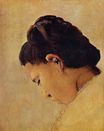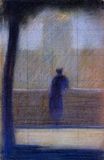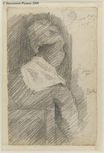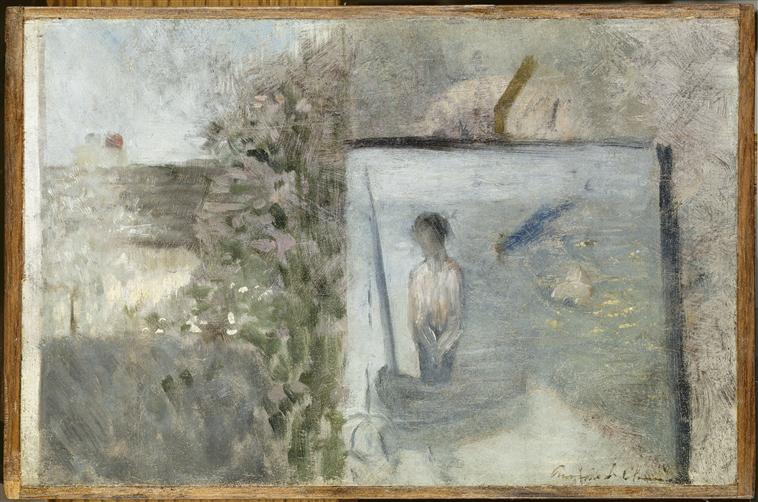Жорж Сёра - Пейзаж с 'Грешниками' Пюви де Шаванна 1879-1881
 |
 |
 |
 |
 |
 |
 |

Пейзаж с 'Грешниками' Пюви де Шаванна 1879-1881
17x26см масло/доска
Musée d'Orsay, Paris, France
<< Previous G a l l e r y Next >>
From Musée d'Orsay, Paris:
In 1881, Puvis de Chavannes exhibited his Poor Fisherman at the Salon de la Société des artistes français. It drew violent reactions from the critics. But the young artists of the time took a different attitude and many of them—Maurice Denis, Eugène Carrière, Paul Gauguin, Odilon Redon and Paul Signac—referred to the canvas in their writings. Apart from such comments, The Poor Fisherman also inspired two paintings. One, true to the original model, was a painting by Aristide Maillol (Musée des Beaux-Arts, Nancy, on loan from the Musée d'Orsay) and the other, further removed from the source, is this quotation by Georges Seurat.
In 1879, Seurat painted a landscape of Saint Ouen on a small wooden panel. He then used the other side for a sketch of a landscape, still visible on the left, in which we can see a house and a tree in blossom. Not long after he saw Puvis' work in the Salon, Seurat partly covered the right-hand side of the panel with his interpretation of The Poor Fisherman. Probably painted from memory, it is squarer than the original and concentrates on broad areas of colour and the main lines of the composition. By its colour scheme and the allusive brushstrokes, this 'copy' prefigures his canvases of the early 1880s.
Several commentators, basing their arguments on the misspelt signature that Seurat added on the lower right of the panel: Puvisse de Chavannes, thought that the work was a mockery. However the young painters' admiration for Puvis de Chavannes, the intimate nature of the sketch and the position of a twenty-two-year-old artist in relation to a member of the jury of the Salon suggest rather a sincere homage on Seurat's part.